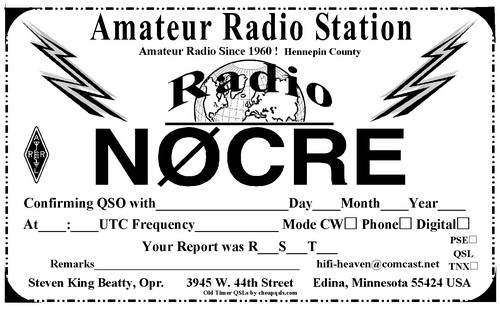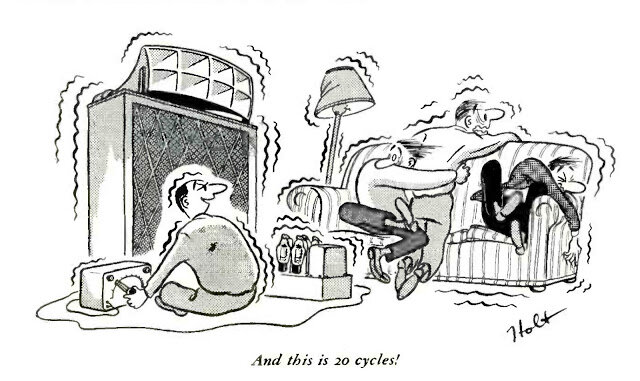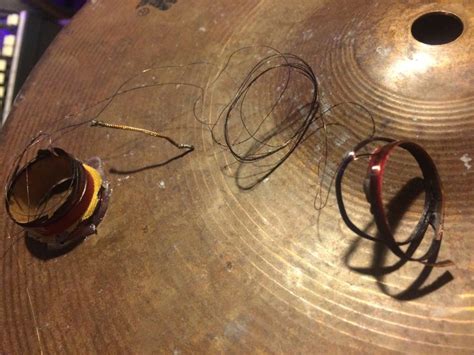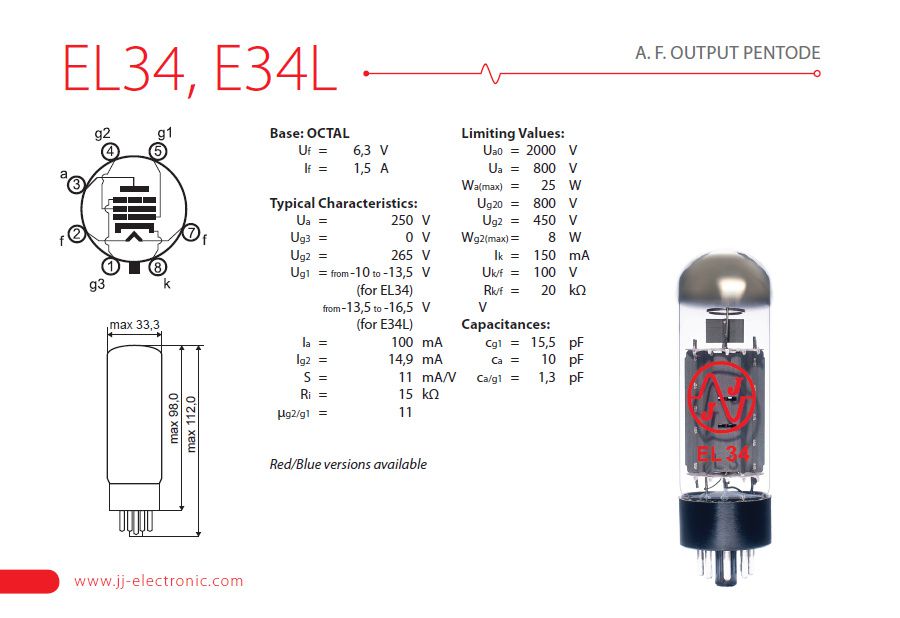-
Posts
276 -
Joined
-
Last visited
Content Type
Forums
Events
Gallery
Everything posted by HiFi Heaven
-
ALTEC MR II 594 is a 500-Hz 3-bolt 1.4" horn with amazing polar response. https://minneapolis.craigslist.org/hnp/ele/d/minneapolis-altec-lansing-mantaray-90/7682005735.html
-
You might be clipping your amplifier. +6dB bass boost requires 4 TIMES the power! Get a sub.
-
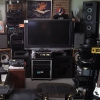
Restoration Project Klipsch KG 3.5 (KM 4) worth to do ?
HiFi Heaven replied to MicroMara's topic in Technical/Restorations
Reflow the solder on both leads of that resistor, look at the foil traces for cracks nearby. -
Try an extension cord plugged into a laundry circuit near your electrical panel. If that helps, the noise is conducted from the source onto your power line.
-

Does everyone have a hiss when no music is playing?
HiFi Heaven replied to Don A's topic in 2-Channel Home Audio
DC [Direct Current] can't produce Hiss, Hum, or ANY sound at all! Test this with a 1.5 V DC battery connected directly to your speaker. The woofer will move once and stay there until the battery is dead, turning the battery DC energy into HEAT, not SOUND. Not a Peep! HUM is usually steady 60 or 120-Hz buzzing from AC power wiring sneaking into inadequately shielded patch cords, or faulty grounding. Ancient tube amplifiers with failing filter capacitors might go "Hmmm" as the owner tells you "It Hums because it doesn't know the Words!" HISS is thermal noise of random electrons partying inside your preamp, you have to turn the volume way up to hear them - they are very small. If you enjoy HISS like I do, get a Ham Radio and talk to me on the air! 73, NØCRE "Can't Remember Everything" FCC Licensed since 1960 -

Does everyone have a hiss when no music is playing?
HiFi Heaven replied to Don A's topic in 2-Channel Home Audio
-
Maybe we should listen for Tesla's longitudinal EM waves instead of conventional transverse EM?
-
Correct polarity can be heard as an increase in volume at crossover frequency on a noise signal, can be seen on an audio real-time spectrum analyzer like AudioTool on your phone or tablet. Out of phase produces a pronounced dip at crossover as opposing acoustic waves cancel.
-
NØCRE "Can't Remember Everything" near Minneapolis 100 watts SSB 20/40/75M + 50 watts FM 144/440 MHz
-
90dB is fine, requires less than one watt. KG3.2 sensitivity is 94dB at 3 feet at 1 watt. They will last a lifetime. 119dB is NOT OK for KG3.2's! That level would require 250+ watts, they are rated 65 watts long term. Poof!
-
Those fuse values offer NO protection for your speakers, MKAZ. See my earlier comment about fuse specs - it takes a while to blow a fuse at 200%. Or save yourself the trouble, just keep the volume below the threshold of distortion.
-
Hi MKAZ - 4Ω is normal DC terminal resistance for many Klipsch "8Ω" speakers. DCR at the input terminals = woofer DCR + negligible lowpass inductor resistance. Zero DC current flows through the crossover network to Mid, Tweeter, or Ground. Static 4Ω DCR rises to 6-8Ω AC in the bass musical range inside a tuned enclosure. Be aware a 3A fuse offers no protection for 1" voice coils - start with 1.25A fast blow. We used 3A fuses to protect commercial ALTEC 100-watt woofers with 3" voice coils. Music is dynamic. Fuses are rated to blow within 10-30 seconds after 200% overload. Way too late for your charcoaled voice coil...
-
Maybe some of our members could characterize the superiority of JEM capacitors vs. other brands on an objective basis with measurements of value, tolerance and ESR, rather than subjective jargon? I'm ready to recap 12 vintage Klipsch, looking for advice based on experience, not opinion. Thanks!
-
DC Ω resistance is ALWAYS less than AC impedance, sometimes a lot less. Quick test: swipe a 9-volt battery across the terminals, the cone should JUMP. Reverse the battery polarity, speaker cone should jump in the opposite direction. Use a 1.5 volt battery to test compression drivers - 9 volts might damage them.
-
ALTEC 15" woofers were rated 30 watts in 1966!
-
ALTEC VOTT 1966 catalog page:
-
I own 8 KG4's - your speaker DCR readings seem normal. You may have blown fuses or output transistors in the Marantz. Try a different amplifier. Good luck!
-

Setup advice, most economical amp for AW650 speaker sets
HiFi Heaven replied to madfusker's topic in 2-Channel Home Audio
Over-driven amplifier clipping turns musical sine waves into distorted square waves which have high harmonic content. The spectral balance shifts upward with the clipped harmonics passing easily thru the crossover cap to the delicate tweeter. The diaphragm can't follow square waves so the excess power dissipates as heat in the voice coil, "charcoaling" the tiny wire. -
She was the glue that kept Fleetwood Mac together since 1971. RIP, Christine Perfect McVie!
-
Look for 6.3V AC filament voltage on pins #2 & #7 of the EL34 sockets, careful of HV! Reflow the solder with plenty of heat - those heaters draw 1.5 Amps!
-
RF Skin effect, kids! Frequencies over 200 MHz flow easier on the outside of the conductor! As we raise speaker cables off the floor, we reduce the probability of VHF harmonic absorption by nearby carpet fibers, vinyl polymers, wood resins, and damp concrete. Never mind we can't even hear 20 KHz, much less the 100th harmonic! Learn the science, expose the grifters, enjoy your favorite music!
-

Which amps maximize the bass output from Heresy IV's
HiFi Heaven replied to Tiffiny's topic in 2-Channel Home Audio
Is there some reason why you guys won't spend $8.00 on a 1/12-octave RTA that runs on your phone, generates sine, sweep, pink noise test frequencies? Plug & Play. AudioTool for Android & Apple.




